Planning a Meaningful First Death Anniversary Memorial: A Compassionate Guide
Discover compassionate guidance for planning your loved one's first death anniversary memorial. Learn meaningful ceremony ideas, timeline tips, and ways to honor their memory that feel right for your family.

The calendar page turns, and suddenly you're facing a date you've been dreading for months. Your loved one's first death anniversary is approaching, and you might be feeling a confusing mix of emotions: anxiety about how to mark this milestone, pressure to do something meaningful, worry about whether a ceremony will be too painful, or uncertainty about what feels appropriate.
You're not alone in these feelings. Research from grief counselors consistently shows that anticipatory anxiety around the first anniversary is one of the most common experiences in the grief journey (Rando, 1993). Many people describe this period as surprisingly difficult, sometimes rivaling the intensity of the weeks immediately following their loss.
This guide will walk you through planning an anniversary memorial that honors both your loved one's memory and your own healing process. Whether you're coordinating a family gathering or creating a personal ritual, you'll find practical steps, ceremony ideas, and emotional support for navigating this significant milestone.
Key Takeaways
- The first death anniversary often brings anticipatory anxiety 4-6 weeks before the date, which is a normal part of grief
- Starting your planning 4-6 weeks ahead can reduce stress and allow time for thoughtful decisions
- There's no single "right way" to commemorate; meaningful ceremonies range from intimate family gatherings to solo reflection
- Involving family members in planning can strengthen connections while honoring individual grief styles
- Physical memorial elements like photos, music, and tangible remembrances help create healing rituals that acknowledge continuing bonds
Reflections on love, loss, and the ways we carry them.
The first death anniversary is not just a date on the calendar. It’s a quiet reckoning. The initial numbness of loss has softened, and what remains is a deeper, steadier ache: the realization that life has moved forward, one full year without your loved one in it. This milestone often carries an emotional complexity that surprises families. The days leading up to it can stir sleepless nights, unspoken guilt, or sudden tears over memories that resurface uninvited. Psychologists call this “anticipatory grief,” but for most, it simply feels like love searching for a place to land.
In my work with grieving families, I’ve found that the most meaningful commemorations aren’t elaborate, they’re honest. Carol, a mother I once met, shared that for years, her daughter’s ashes sat untouched in a closet because “the thought of dividing them felt unbearable.” When she learned about Parting Stone’s solidification process, she felt a sense of peace. “Now her memory lives in each of our homes: in a garden, on a desk, in a keepsake box. It’s like she’s come home to all of us,” she told me. Their first anniversary became less about what they’d lost and more about how love could still be shared, even in transformed form.
This is the heart of continuing bonds. The understanding that relationships don’t end with death; they evolve. Whether through shared stones, a quiet meal, or a simple walk to a favorite place, what matters is creating a moment that feels authentic to both your grief and your love.
The first anniversary teaches us that healing isn’t forgetting. It’s learning to live with absence in ways that honor presence. And sometimes, that begins with something as small, and as profound, as holding a stone that feels like the hand you once held.
Cathy Sanchez Babao
Parting Stone Grief Coach
Understanding the Emotional Landscape of the First Anniversary
The first death anniversary carries unique emotional weight. Unlike the initial shock of loss, this milestone brings a different kind of pain: the full realization that an entire year has passed without the person you love.
Many families report that the weeks leading up to the anniversary feel harder than the day itself. Psychologists call this "anticipatory grief," and it's your mind's way of preparing for an emotionally significant moment (Worden, 2018). You might find yourself replaying memories of the final days, feeling guilty about moments of happiness during the year, or experiencing physical symptoms like disrupted sleep or changes in appetite.
The first anniversary also marks a transition point. You've survived all the "firsts" without your loved one: the first birthday, first holidays, first seasons. This anniversary acknowledges that reality while opening space for what grief therapists call "continuing bonds" - the recognition that your relationship with your loved one doesn't end with death but transforms (Klass, Silverman & Nickman, 1996).
Some people find comfort in marking this transition. James🖤, whose wife died unexpectedly, shared that "having solidified remains ready for the anniversary gave us something tangible to include in our ceremony. Each family member held one of the stones while sharing a memory, and it felt like she was present with us in a way that honored both her absence and her ongoing place in our family."
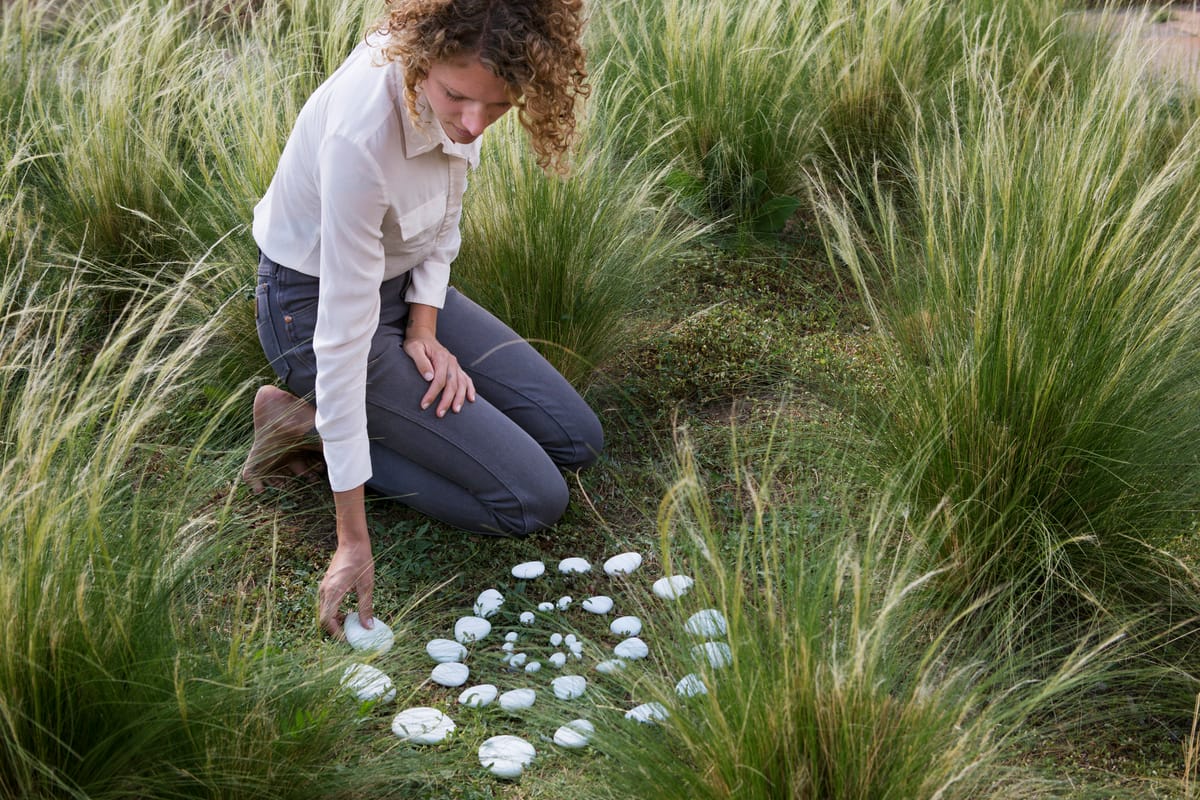
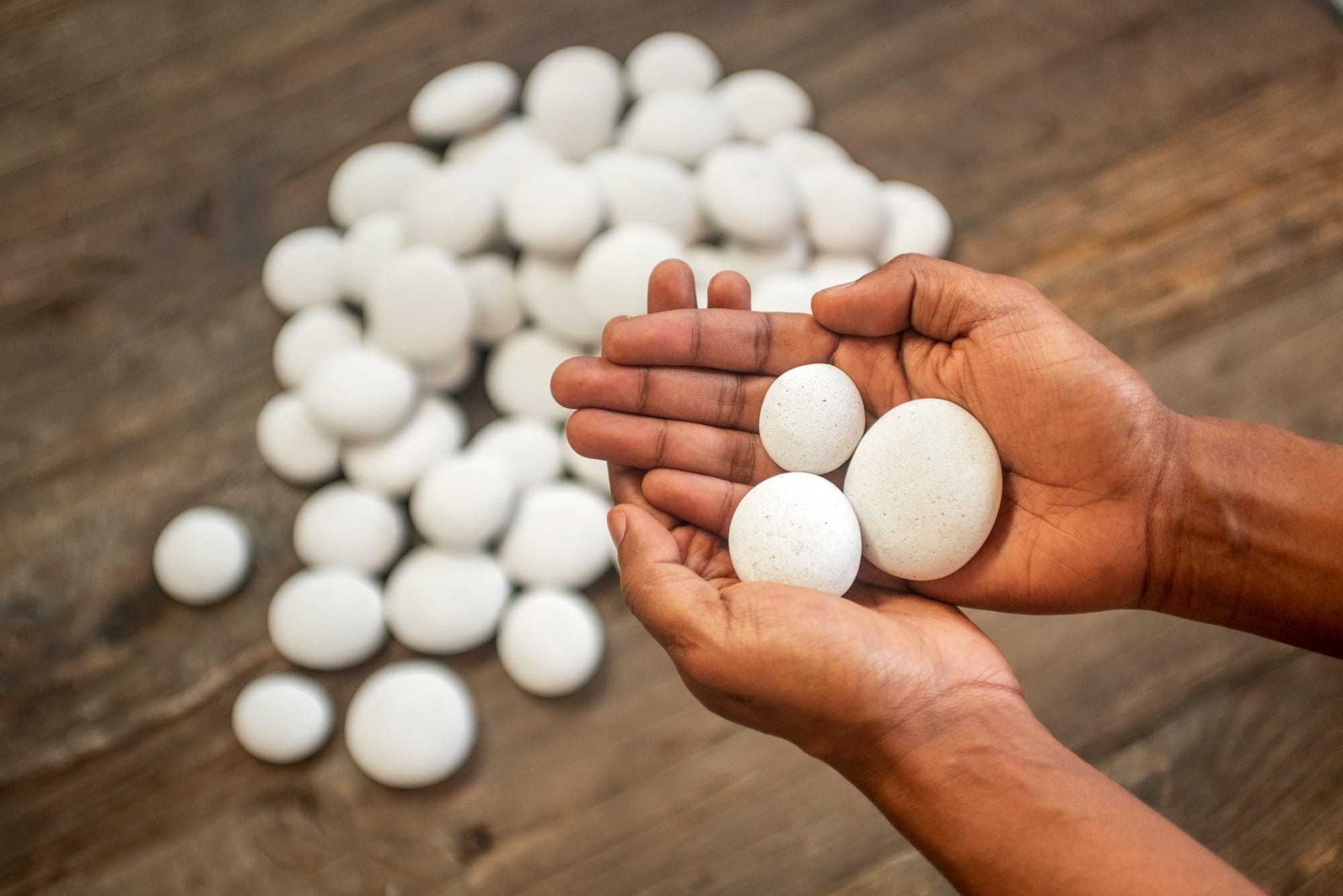
A New Way to Hold Close What Matters Most
We transform cremated remains into beautiful, touchable stones that bring comfort when you need it. Something you can hold, share, and keep close.
How Do You Plan a Meaningful First Death Anniversary Memorial?
Planning begins with understanding that meaningful doesn't require elaborate. Here's a framework many families find helpful:
- Start planning 4-6 weeks ahead to reduce last-minute anxiety and allow time for thoughtful decisions
- Involve key family members in deciding the ceremony type, whether that's a gathering, private ritual, or symbolic act
- Choose a meaningful location that connects to your loved one's life or your family's healing journey
- Prepare elements that honor their memory through photos, music, favorite foods, or readings that capture their spirit
- Build in flexibility and self-compassion throughout planning, knowing that grief doesn't follow predictable patterns
The goal isn't perfection. The goal is creating a moment that feels true to your loved one's memory and supportive of your family's healing.
Chris's son died before he got to embark on the cross-country train trip that he had planned. Learn how solidified remains are helping him go on the journey he never got to take.
Planning Timeline and Practical Considerations
Six Weeks Before
Begin having conversations with family members about what feels right. Some questions to explore together:
- Do we want to gather in person, or would individual commemorations feel more authentic?
- What location would honor our loved one's memory: their favorite place, our family home, a place in nature, or somewhere new that holds meaning for our healing?
- Who needs to be involved, and how do we respect different grief styles within the family?
- What elements would make this feel personal rather than performative?
Carol 🖤, who lost her daughter five years ago, remembers the relief of finding a different approach: "We had our daughter's ashes sitting on the floor of a closet for five years after she died. Some of her friends wanted some of the ashes, but the idea of pouring a little bit here and there made us feel sick to our stomachs. When we finally found solidified remains, it gave us a way to share her memory that felt dignified and meaningful for the anniversary."
Four Weeks Before
Make practical arrangements:
- Confirm location details and any needed reservations
- Reach out to extended family or friends you'd like to include
- Gather physical items: photos, favorite music, meaningful objects
- Consider any memorial elements you want to create or prepare
- Plan for the logistics of the day itself: food, timing, who will coordinate what
Two Weeks Before
Focus on emotional preparation:
- Schedule time to talk with a grief counselor or supportive friend if anxiety is building
- Prepare any words you might want to share during the ceremony
- Give yourself permission to change plans if something doesn't feel right
- Remind family members that tears, laughter, and silence are all acceptable responses
Remember that processing time varies. Families working with funeral homes who select solidification services typically need 8-10 weeks for the process to complete, so if physical memorial elements are important to your ceremony, planning ahead matters.
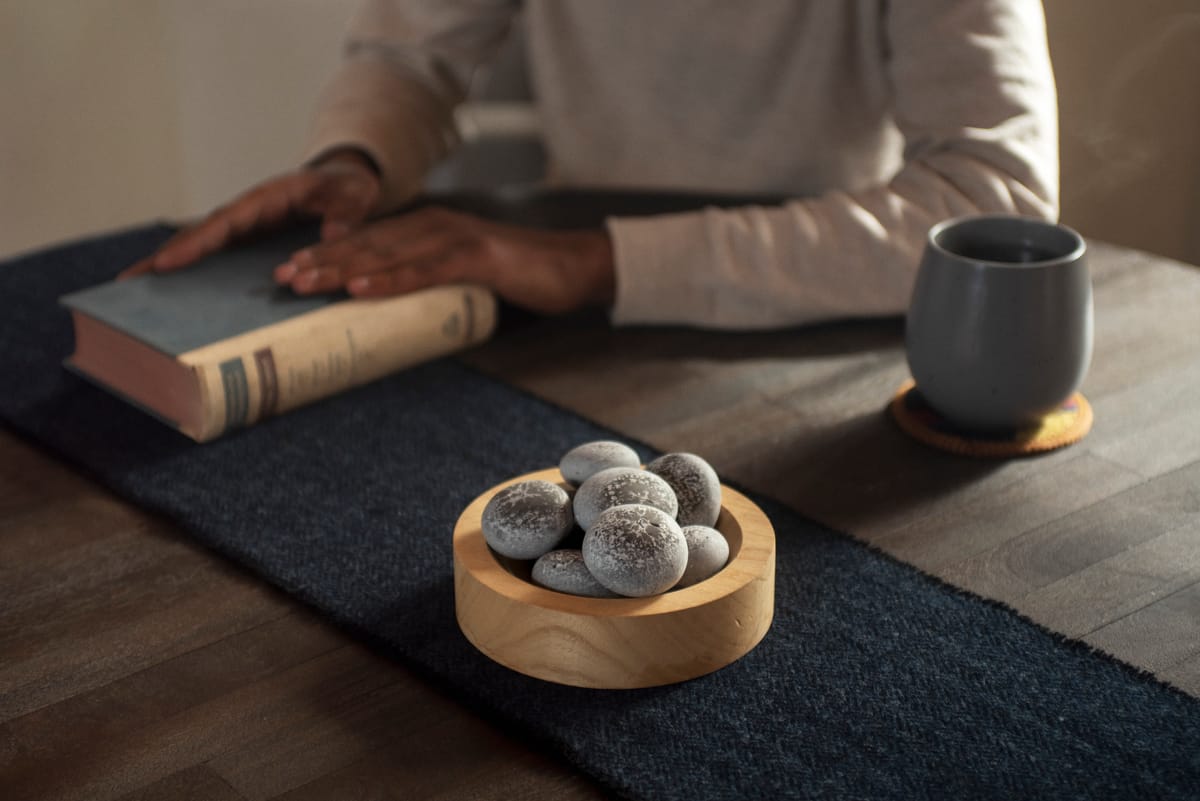
@chloebluffcakes Thank you @partingstone 🤍 youve given me an unimaginable gift. One day I will share these with my little sister and carry her wherever we go in life together. #grief #partingstone #loss
♬ Repeat Until Death - Novo Amor
Meaningful Ceremony Ideas for Different Family Situations
Intimate Family Gatherings
Many families find that small gatherings of immediate family and close friends feel most authentic. Margaret🖤, who lost her mother several years ago, shared: "Having the Parting Stones gave us an opportunity to have a joyful ceremony distributing stones to people who loved her. The stones are now spread out between many homes, in shadow boxes, keepsake chests, and gardens - each location special to the individual."
Consider these elements for intimate gatherings:
- Memory sharing circles where each person tells a story about your loved one
- Favorite meal preparation using recipes they loved or always made
- Photo displays that capture different life stages and relationships
- Music selection that reflects their personality and brings comfort
- Symbolic gestures like lighting candles, releasing biodegradable materials, or planting something living
Solo Rituals and Personal Commemorations
Not everyone finds meaning in group gatherings. If you're someone who processes grief privately, create a personal ritual that honors your unique relationship:
- Visit a location that holds significance for just the two of you
- Spend the day doing activities they loved or you enjoyed together
- Write a letter expressing what the year has taught you
- Create art, music, or poetry that captures your feelings
- Take meaningful action like donating to a cause they cared about
Tracy🖤, who lost her spouse, explains the comfort of portable memorial elements: "I carry one of the stones with me at all times. I'd learned about solidified remains before he died. We discussed this as an option and he loved the idea. He asked me to take some to his favorite coral reef. This process is so much better than ashes in an urn."
Involving Children and Young Family Members
When children are grieving, anniversary commemorations need age-appropriate elements that validate their feelings while avoiding overwhelming them:
- Let children help choose activities or elements for the ceremony
- Create opportunities for physical expression: drawing pictures, making crafts, outdoor activities
- Keep explanations honest but gentle about what the anniversary means
- Watch for signs of emotional overload and build in breaks or quiet time
- Model healthy grief by showing your own emotions while maintaining stability
Trevor kept the cremated remains of his dad in his sock drawer. Learn how solidified remains helped bring meaning back to one of his most treasured possessions.
Creating Rituals That Acknowledge Continuing Bonds
Contemporary grief psychology has moved away from the idea that we must "let go" to heal. Instead, research supports the concept of continuing bonds: finding appropriate ways to maintain connection with people we've lost (Klass et al., 1996).
Anniversary commemorations offer a natural opportunity to establish or strengthen these ongoing connections. Some families find that tangible memorial elements support this process. As one person 🖤 whose brother was killed unexpectedly shared: "Turning him into the stones gave me the opportunity to put him out in a place in my home where he would never be confined to a box. It's a place I can go to, to whisper a few sentiments of how much I miss him and love him."
Physical objects that you can hold, display, or carry create what psychologists call "linking objects" - items that help maintain the emotional connection while acknowledging the loss (Volkan, 1981). These might include:
- Photos displayed in meaningful ways
- Jewelry containing memorial elements
- Garden spaces dedicated to their memory
- Collections of their favorite things
- Solidified remains that can be held, shared among family, or placed in significant locations
For families who chose cremation, some discover that traditional cremated remains present challenges for creating these rituals. Ashes can be difficult to divide, display, or incorporate into ceremonies without causing discomfort. Families working with funeral homes have access to solidification services that transform cremated remains into 40-60 smooth, stone-like pieces. These solidified remains can be distributed among family members, carried to meaningful locations, or incorporated into anniversary ceremonies in ways that feel respectful and healing.
Human remains solidification through funeral homes typically costs $2,495, and the 8-10 week processing timeline means families planning for anniversary commemorations should coordinate early with their funeral home.
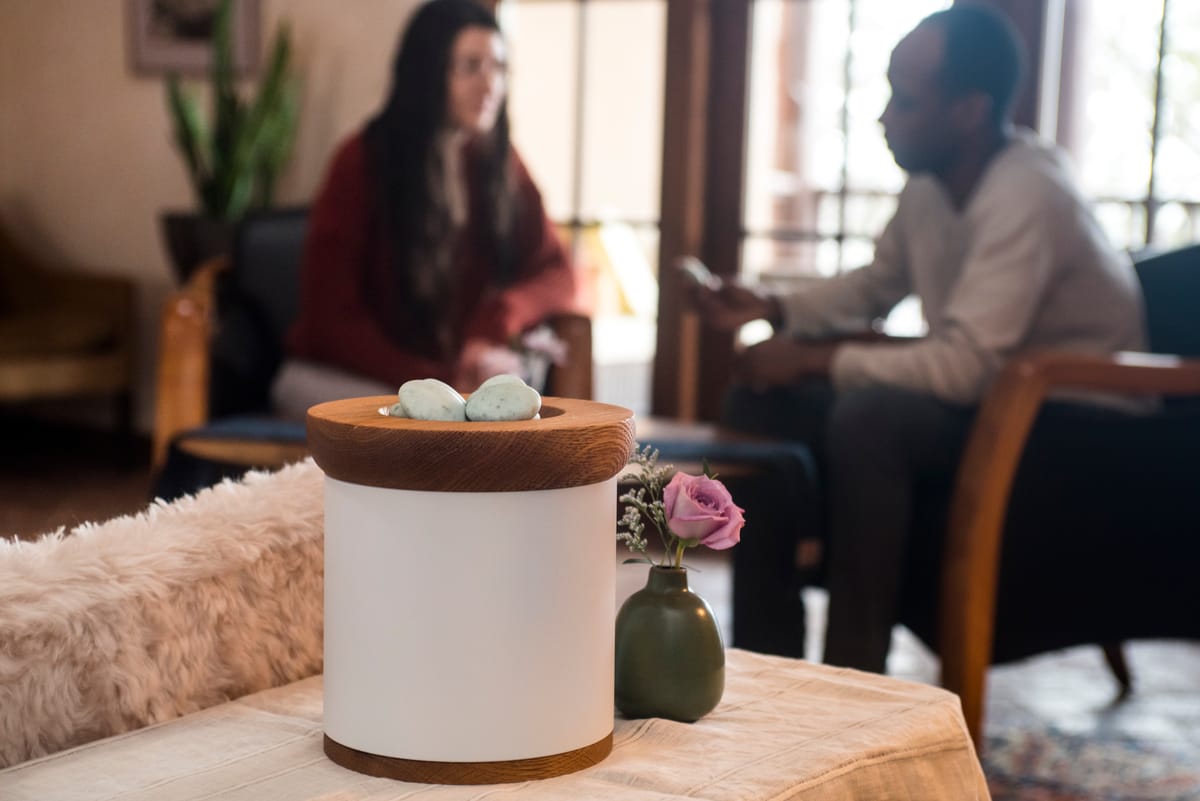
Navigating Family Disagreements and Different Grief Styles
One of the most challenging aspects of planning an anniversary memorial is honoring different approaches to grief within one family. What feels healing to one person might feel performative or painful to another.
Dr. Kenneth Doka's research on grief styles identifies different patterns: some people are intuitive grievers who need to express emotions openly, while others are instrumental grievers who process through action and problem-solving (Doka & Martin, 2010). Anniversary planning works best when it makes space for these differences.
Strategies for navigating different needs:
- Have explicit conversations about what each person needs from the day
- Create both group and individual opportunities within the ceremony
- Avoid prescriptive language about how people should feel or act
- Designate quiet spaces where people can step away when overwhelmed
- Plan follow-up for family members who need more or different support
Remember that disagreements about memorial planning often stem from different ways of loving the person who died, not from different amounts of love. Susan🖤, who lost her spouse, noted: "We have a part of him to keep with us and to easily leave behind when we visit his favorite places where we made lasting memories. The process was much easier than I anticipated, and updates all along the way helped everyone feel included."
Self-Care During Planning and on the Anniversary Day
Planning an anniversary memorial while grieving creates a unique emotional strain. You're trying to honor someone while managing your own pain, coordinate with others while protecting your boundaries, and create meaning during one of the hardest times in your life.
Essential self-care practices:
Before the Anniversary:
- Set realistic expectations for what you can accomplish
- Ask for help with logistical details from people outside your immediate grief circle
- Schedule time for rest and emotional processing
- Connect with a therapist or counselor if anxiety feels overwhelming
- Give yourself permission to say no to suggestions that don't feel right
On the Day:
- Plan less than you think you need; ceremonies can always extend organically but it's harder to shorten them
- Identify a trusted person who can help manage logistics so you can be present emotionally
- Build in transition time before and after the ceremony
- Avoid making major decisions on this day
- Remember that painful moments and peaceful moments can coexist
After the Anniversary:
- Recognize that emotions might intensify after the date passes
- Schedule follow-up support or connection with safe people
- Journal about what worked well and what you'd approach differently next time
- Be gentle with yourself during the days following the ceremony
Nancy🖤, whose husband died several years ago, found unexpected comfort in memorial planning: "I didn't want to make his ashes into anything such as jewelry; that was too macabre for me. But when I saw information about solidified remains, it seemed like the perfect solution. I placed the stones around his last project on our property, and it's a constant reminder of him, but in a great way."
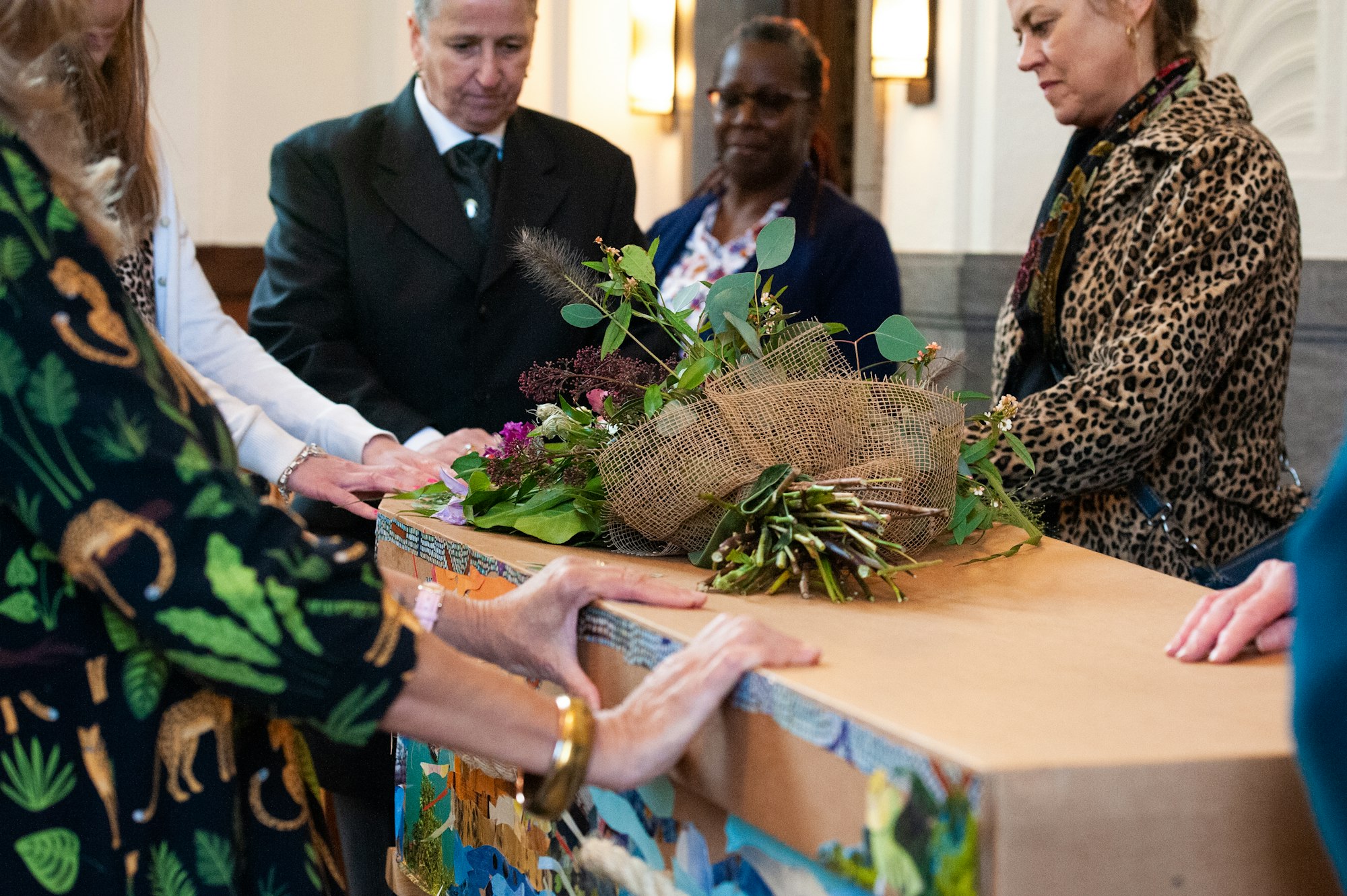
Making the Memorial Personally Meaningful
Generic ceremonies rarely provide the comfort you're seeking. The most meaningful anniversary commemorations reflect the unique person you're honoring and the specific relationships your family shared with them.
Ways to personalize your ceremony:
Honor Their Personality:
- If they were private, keep the ceremony intimate
- If they loved celebration, incorporate joy alongside sadness
- If they valued specific causes, include related charitable elements
- If they had a sense of humor, allow space for laughter and lighthearted memories
Reflect Your Relationship:
- Include activities you did together
- Play music that reminds you specifically of them
- Prepare food they taught you to make or that you shared
- Visit locations that hold meaning for your unique bond
Acknowledge Your Healing Journey:
- Recognize what the year has taught you
- Share how you've changed or grown
- Express gratitude for continuing connections
- Set intentions for the year ahead
Jean🖤, who lost both parents, explains: "I feel it will be a much better tribute to them to incorporate the stones in the garden or anywhere else that was meaningful to them. They both loved yard work and having a nice garden and yard. I also like the idea of leaving a stone here or there in their favorite spots they liked to visit."
@mikkzazon The company is @PartingStone ♥️ #partingstones #griefjourney #griefawareness
♬ original sound - Mik Zazon
Creating Traditions for Future Anniversaries
The first anniversary sets a foundation, but it doesn't lock you into a permanent pattern. Many families find that what feels right the first year evolves as their grief changes.
Some considerations for establishing sustainable traditions:
- Start with elements that can adapt as your family grows and changes
- Choose practices that don't require perfect conditions to maintain
- Consider geographic realities if family members live far apart
- Balance consistency with flexibility; it's okay if future years look different
- Check in annually about whether the tradition still serves everyone
Tiffanie🖤, who transformed her loved one's remains years after death, noted: "The compassion that these people show in the beginning and throughout the process doesn't change. My loved one had a life full of abuse in many forms, but with this group who wanted to help, it felt like the first time she was shown compassion and love."
The key is creating something that can evolve. Shannon🖤, who has traveled with memorial stones to multiple countries, shared: "For me it's been healing to bring my husband's remains and leave stones somewhere happy. I have pictures of my husband's stones in different locations."
Resources and Support for Your Journey
You don't have to navigate anniversary grief alone. Numerous organizations and resources offer specialized support:
Grief Counseling and Support:
- The Dougy Center (https://www.dougy.org) - specializes in children's grief support
- What's Your Grief (https://whatsyourgrief.com) - comprehensive grief education resources
- GriefShare (https://www.griefshare.org) - faith-based grief support groups nationwide
- Open to Hope (https://www.opentohope.com) - diverse grief stories and expert guidance
Memorial Planning Resources:
- National Funeral Directors Association (https://www.nfda.org) - consumer resources for memorial planning
- Funeral Consumers Alliance (https://funerals.org) - nonprofit advocacy and education
Professional Support:
- Association for Death Education and Counseling (https://www.adec.org) - find certified grief counselors
- American Psychological Association (https://www.apa.org) - therapist locator for grief specialists
Remember that seeking professional support isn't a sign of weakness but of wisdom. The first anniversary can resurface intense emotions, and having expert guidance can make a significant difference in how you navigate this milestone.

Conclusion
The first death anniversary arrives whether you feel prepared or not. But approaching it with intention, self-compassion, and attention to what feels meaningful for your unique situation can transform this painful milestone into a moment of connection, healing, and honoring.
There's no perfect way to mark this day. What matters is creating a commemoration that acknowledges your loss, honors your loved one's memory, and supports your continuing journey through grief. Whether you gather with family, spend time in quiet reflection, or create new rituals that feel authentic to your relationship, trust that your choices are valid.
Your loved one's absence is real and profound. But so is the love that continues beyond death. The first anniversary offers an opportunity to acknowledge both truths: the pain of loss and the enduring nature of love. By planning thoughtfully and treating yourself with compassion, you create space for grief and growth to coexist.
If solidified remains might support your anniversary commemoration or ongoing healing, you can learn more about this option through your funeral home. The service transforms cremated remains into tangible pieces that can be held, shared, and incorporated into meaningful rituals that honor continuing bonds.
Whatever you choose, remember that you're not walking this path alone. Thousands of families navigate first anniversaries each year, each finding their own way to honor love that death cannot diminish.
Frequently Asked Questions
What should you do on a death anniversary?
There's no prescribed way to mark a death anniversary. Many families find meaning in gathering to share memories, visiting significant locations, performing acts of service their loved one valued, or creating personal rituals that honor the relationship. Some people prefer quiet reflection, while others find comfort in celebration. The most important factor is choosing an approach that feels authentic to your grief style and relationship with the person who died.
How long does anniversary grief last?
Anniversary reactions typically intensify 4-6 weeks before the date and may continue for several weeks after. However, the intensity usually lessens compared to the initial grief period. Research shows that while anniversary reactions are common, they don't necessarily follow predictable patterns. Some people experience strong emotions on the exact date, while others find the anticipation more difficult than the day itself (Rando, 1993).
Should children attend anniversary memorials?
This depends on the child's age, their relationship with the person who died, and their individual needs. Generally, including children in age-appropriate ways helps them process grief and understand that remembering deceased loved ones is healthy. Prepare them for what will happen, give them agency to participate or take breaks, and watch for signs of emotional overload. Always be honest about the purpose of the gathering.
How do you honor someone on their first death anniversary?
Meaningful ways to honor someone include: sharing stories about their impact on your life, continuing traditions they valued, visiting places they loved, supporting causes they cared about, creating art or writing that captures your memories, gathering family to cook their favorite meals, or establishing rituals that acknowledge their ongoing presence in your life. Physical memorial elements can support these commemorations by providing tangible focal points for remembering.
Is it normal to feel worse on the anniversary than you did months ago?
Yes, this is completely normal. The anniversary often brings a surge of grief that can feel surprisingly intense. This doesn't mean you're regressing in your healing; rather, it reflects the significance of the milestone. Anticipatory anxiety in the weeks leading up to the anniversary is also common. These intensified feelings typically ease after the date passes. If the intensity persists or interferes significantly with daily functioning, consider connecting with a grief counselor.
What if family members disagree about how to mark the anniversary?
Family disagreements often reflect different grief styles rather than different amounts of love. Try creating a ceremony that includes both group and individual elements, allowing each person to participate in ways that feel right for them. Have explicit conversations about needs and expectations. Consider compromise solutions like a brief shared ritual followed by individual time, or separate commemorations that honor different approaches. The goal is acknowledging the loss together while respecting diverse ways of grieving.
References
Doka, K. J., & Martin, T. L. (2010). Grieving beyond gender: Understanding the ways men and women mourn (Rev. ed.). Routledge.
Klass, D., Silverman, P. R., & Nickman, S. L. (Eds.). (1996). Continuing bonds: New understandings of grief. Taylor & Francis.
Rando, T. A. (1993). Treatment of complicated mourning. Research Press.
Volkan, V. D. (1981). Linking objects and linking phenomena: A study of the forms, symptoms, metapsychology, and therapy of complicated mourning. International Universities Press.
Worden, J. W. (2018). Grief counseling and grief therapy: A handbook for the mental health practitioner (5th ed.). Springer Publishing Company.







